Foods are any substance consumed by living beings to get nutritional support. It usually comes from plants, animals, or fungi and contains important nutrients like carbohydrates, fats, proteins, vitamins, or minerals.
The body uses food to get energy, maintain life, or stimulate growth. Humans and animals eat food through a process known as feeding, and it’s a basic part of daily life that affects health and survival.
Different cultures have various types of foods, based on what’s available in their environment and their historical traditions. Food can be prepared and served in a wide range of ways, from raw to fully cooked meals.
Besides nutrition, food also plays a significant role in social gatherings and cultural events.
This guide lists the 100 most popular foods worldwide, 20 foods with special meanings. I will dive into everything you need about foods, covering basics like various kinds of food, from meats, and seafood to fruits, and vegetables.
I also looks at food preparation methods, popular types of prepared foods, and the flavors that define them. The exploration continues into what defines cuisine and how culture influences eating habits and food choices.
You can explore how various foods complement each other, including the relationship between food and beverages, delve into the differences between staple foods versus specialty foods, and distinguish between ‘food’ and ‘dish’.
By the end, you’ll discover foods categorized by letters and colors.
Let’s get into it!
100 Most Popular Foods Around The World
The following list includes the 100 most famous foods from various countries worldwide, arranged according to how popular they are. You are welcome to take advantage of the filter option to divide these food items into multiple categories.
Rice
- Grains
Rice is a staple grain consumed worldwide, known for its versatility in various dishes.
Bread
- Grains
Bread is a baked food made primarily from flour and water, available in many shapes and forms.
Chicken
- Meat
Chicken is a type of poultry that is widely eaten for its tender meat.
Potato
- Vegetables
Potato is a root vegetable known for its starchy content and adaptability in numerous dishes.
Apple
- Fruits
Apple is a fruit with a sweet to tart taste, famous for its crisp texture and health benefits.
Banana
- Fruits
Banana is a long, curved fruit with a soft, sweet inside and a yellow peel.
Tomato
- Vegetables
Tomato is a red or yellow edible fruit that’s often utilized in cooking or eaten raw in salads.
Onion
- Vegetables
Onion is a bulbous plant with a sharp taste and smell, used to add flavor to food.
Lettuce
- Vegetables
Lettuce is a leafy green vegetable, commonly appearing in salads and sandwiches for its crisp texture.
Beef
- Meat
Beef is the meat from cows, popular in various dishes worldwide for its rich flavor.
Pork
- Meat
Pork is the meat from pigs, often cooked in various styles across different cultures.
Carrot
- Vegetables
Carrot is a crunchy, orange vegetable that can be eaten raw or cooked and is rich in vitamins.
Orange
- Fruits
Orange is a citrus fruit with a tangy flavor and is known for being a good source of vitamin C.
Egg
- Other Protein Foods
Eggs are an animal product, enclosed in a shell, that’s widely used in cooking for its versatility.
Soybean
- Vegetables
Soybean is a type of legume that serves as a key source of protein and oil.
Garlic
- Vegetables
Garlic is a strong-flavored bulb used as a seasoning or condiment in many dishes.
Yogurt
- Dairy
- Dishes
Yogurt is a creamy dairy product made by fermenting milk with live bacteria.
Pasta
- Dishes
Pasta is a type of noodle made from wheat flour, water, and sometimes eggs, often served with sauce.
Corn
- Vegetables
Corn is a large grain plant with yellow kernels that’s eaten as a vegetable or used as livestock feed.
Salmon
- Seafood
Salmon is a pinkish-orange fish that’s popular for its taste and nutritional benefits, including omega-3 fatty acids.
Spinach
- Vegetables
Spinach is a green leafy vegetable packed with nutrients, often eaten cooked or raw.
Noodle
- Grains
Noodles are long, thin strips of dough cooked in boiling water, common in many cuisines around the world.
Cheese
- Dairy
Cheese is a dairy product that comes in many flavors and textures, made by curdling milk.
Lamb
- Meat
Lamb is the meat from young sheep, known for its tender texture and mild flavor.
Broccoli
- Vegetables
Broccoli is a green vegetable with a tree-like structure, rich in vitamins, that can be eaten raw or cooked.
Almond
- Nuts
Almonds are a type of nut known for their crunchy texture and health benefits, often eaten as a snack or used in cooking.
Strawberry
- Fruits
Strawberry is a bright red, juicy fruit with a sweet flavor and a fragrant aroma, popular in desserts.
Peanut
- Nuts
Peanut is a legume with edible seeds encased in a hard shell, commonly roasted and eaten as a snack or used to make peanut butter.
Cucumber
- Vegetables
Cucumber is a long, green vegetable with a mild, refreshing taste, often used in salads or as a garnish.
Bell Pepper
- Vegetables
Bell pepper is a vegetable with a sweet and crisp flavor, available in green, red, yellow, and orange varieties, used in a variety of dishes.
Mango
- Fruits
Mango is a tropical fruit with a sweet, juicy pulp and a distinct, fragrant aroma, often eaten fresh or used in desserts.
Pineapple
- Fruits
Pineapple is a tropical fruit with a spiky outer skin and sweet, tangy flesh, used in both sweet and savory dishes.
Sweet Potato
- Vegetables
Sweet potato is a starchy root vegetable with a sweet taste and a bright orange interior, versatile in cooking.
Avocado
- Fruits
Avocado is a creamy, green fruit with a buttery texture, often used in salads, spreads, and as a garnish.
Chickpea
- Vegetables
Chickpea is a small, round legume with a nutty flavor, used in a variety of dishes, including soups, salads, and spreads.
Lentil
- Vegetables
Lentil is a small, lens-shaped legume that comes in various colors and is used in many dishes for its protein content.
Olive
- Fruits
Olive is a small, oily fruit with a bitter taste, eaten on its own or used to make olive oil.
Chocolate
- Dishes
Chocolate is a sweet treat made from cocoa beans, often enjoyed in bars, drinks, or desserts.
Honey
- Dishes
Honey is a sweet, sticky liquid produced by bees from the nectar of flowers, used as a sweetener or in cooking.
Maple Syrup
- Dishes
Maple syrup is a sweet, thick liquid made by boiling sap from maple trees, commonly used as a topping for pancakes and waffles.
Quinoa
- Grains
Quinoa is a grain crop with edible seeds that are rich in protein, often used as a rice substitute.
Tofu
- Dairy
Tofu is a soft, cheese-like food made from pressed soybeans, known for its mild flavor and versatility in dishes.
Duck
- Meat
Duck is a type of poultry with rich, flavorful meat, often roasted or used in various culinary traditions.
Turkey
- Meat
Turkey is a large bird with lean meat, commonly served roasted as a festive dish in many cultures.
Venison
- Meat
Venison refers to the meat from deer, noted for its lean texture and gamey taste.
Rabbit
- Meat
Rabbit is a type of lean, white meat with a mild flavor, used in various cuisines around the world.
Cod
- Seafood
Cod is a type of fish known for its mild flavor and flaky white meat, commonly used in seafood dishes.
Shrimp
- Seafood
Shrimp are small, slender marine creatures with a flexible shell and a rich, sweet taste, often used in a variety of cuisines.
Lobster
- Seafood
Lobster is a large marine crustacean with a hard shell and tender meat, considered a delicacy in many cultures.
Oyster
- Seafood
Oyster is a type of shellfish that lives in saltwater, valued for its briny flavor and often eaten raw or cooked.
Now, let’s zoom in on those food that carry deeper meanings, symbolizing various aspects of culture and history.
20 Most Famous Food with Symbolism Around the World
Food is more than just sustenance; it carries rich symbolism across different cultures. Here’s a concise list of 20 famous foods and their symbolism:
Lentils
- Germany
Eaten during New Year’s celebrations, they symbolize wealth and prosperity because their shape resembles that of coins.
Apple Pie
- United States
Symbolizes American prosperity and national pride.
Noodles
- Mediterranean
Long noodles are eaten during celebrations such as birthdays and New Year, symbolizing a wish for a long life.
Bamboo Shoots
- China
Represent longevity and are often associated with new beginnings and wishes for a prosperous start, especially during the Chinese New Year.
Pumpkin
- East Asia
Symbolizes harvest time and is associated with Thanksgiving and Halloween in the United States and Canada.
Black-Eyed Peas
- Southern United States
Consumed on New Year’s Day, symbolizing prosperity and luck.
Dates
- Global (China, Jewish Traditions)
In Middle Eastern cultures, dates symbolize hospitality and abundance. They are often the first food consumed to break the fast during Ramadan.
Eggs
- China
Often represent fertility and rebirth. Used in numerous festivals and traditions, including Easter in Christianity.
Haggis
- United States (Thanksgiving)
A savory pudding associated with Burns Night, celebrating Scottish heritage and the poet Robert Burns.
Fish
- Middle East
Symbolizes abundance and prosperity. In Chinese culture, fish is a staple during the New Year celebrations for its auspicious symbolism.
Mooncake
- Native American Cultures
Represents reunion and completeness during the Mid-Autumn Festival.
Pomegranate
- Spain
Associated with abundance and fertility due to its many seeds.
Rice
- North America
Symbolizes fertility, wealth, and good fortune. It is a staple food that plays a crucial role in many Asian ceremonies.
Turkey
- Scotland
Represents gratitude and the harvest bounty, central to Thanksgiving celebrations.
Pretzels
- Italy
Associated with good luck, spiritual wholeness, and prosperity due to their looped shape, representing arms crossed in prayer.
Sourdough Bread
- Middle East
Often symbolizes communal sharing and the basic sustenance of life.
Corn
- Global
Represents sustenance, survival, and life; it is central to many Native American creation myths.
Olives
- Japan
Symbolize peace, wisdom, and victory, reflecting the olive branch’s historical use as a peace offering.
Mochi
- Global
This rice cake, often consumed during the Japanese New Year, symbolizes hope for a happy and prosperous year.
Grapes
- Asia
Eating 12 grapes at midnight on New Year’s Eve symbolizes hope for happiness in each month of the coming year in Spanish culture.
After exploring food rich in symbolism, let’s take a look at the main types of foods.
What Are the Main Types of Foods?
Foods can be divided into various groups based on their nutritional properties and roles in our diet. The 5 main types of foods include:
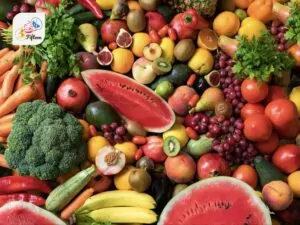
Fruits and Vegetables
These are key for a healthy diet, packed with vitamins, minerals, and fiber. They come from plants and are crucial for keeping our bodies running smoothly.

Proteins
Foods in this group include meats, poultry, fish, eggs, nuts, and beans. Proteins are important for building and repairing tissues in our body.

Dairy
This group includes milk, cheese, yogurt, and other milk-based products. Dairy is a good source of calcium, which is vital for strong bones and teeth.
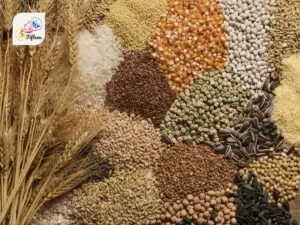
Grains
Grains are divided into two subgroups: whole grains (like whole wheat, brown rice, oats) and refined grains (for example: bread types like white bread and white rice). They are a major source of energy and fiber.

Fats and Oils
The body needs a certain amount of healthy fats to function properly. This category includes butter, oils, and nuts.
This is a brief overview of the main types of foods; many more food varieties await your discovery.
Below, you’ll find a categorization of the most common types of meat, seafood, fruits, and vegetables.
Which Types of Meat Are Most Well-known?
Generally, meats can be categorized into 4 main types, based on the source animal:
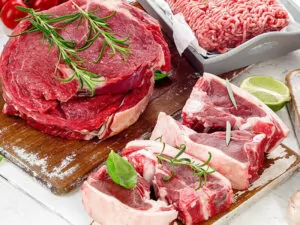
Red Meat
This group has meats like beef, lamb, pork, and goat, which look red when they’re not cooked and get darker as they cook. These meats are full of iron and protein. However, it’s a good idea to not eat too much of them because of health reasons.

Poultry
This includes chicken, turkey, ducks, and geese. Chicken and turkey are especially loved because they have less fat than red meats, making them a go-to for anyone looking to eat a bit healthier.
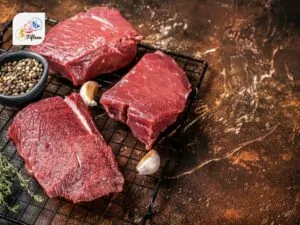
Game
This refers to wild animals that people hunt and eat, such as deer (venison), elk, moose, and even smaller animals like rabbits and certain birds. Game meat is generally leaner than farm-raised meat and has a unique taste.
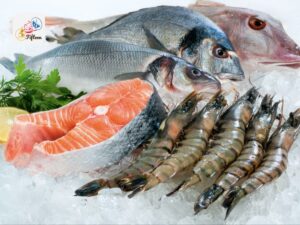
Seafood
This group includes both fish and shellfish. Fish are often grouped by whether they’re fatty, like salmon, which is good for omega-3 fats, or lean, like cod. Shellfish means things like shrimp, crabs, lobsters, and also clams and oysters.
If you’re interested in learning more about different kinds of meat, this guide is really useful. It gives you a clear breakdown, making it easy to understand the variety out there.
What Are the Most Popular Types of Seafood?
Seafood is a broad category of food derived from marine life, which can be classified into the following main types:
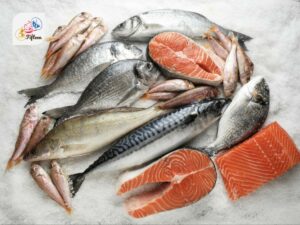
Fish
This group is perhaps the most recognized type of seafood, consisting of both finfish and shellfish. Finfish are categorized into saltwater and freshwater fish, including species like salmon, tuna, cod, and trout. Shellfish, on the other hand, are divided into crustaceans and mollusks.
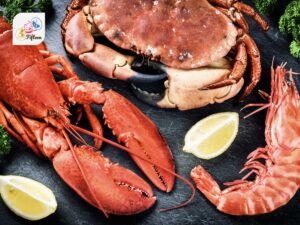
Crustaceans
These are aquatic arthropods with a hard exoskeleton, jointed limbs, and two body segments. Popular crustaceans include crabs, lobsters, shrimp, and prawns. They are known for their delicate flavor and are often considered a delicacy.
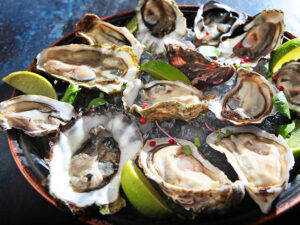
Mollusks
This group includes a wide variety of soft-bodied, shell-bearing aquatic organisms. Mollusks are further subdivided into bivalves, cephalopods, and gastropods.
Bivalves, such as clams, oysters, and mussels, have two hinged shells. Cephalopods, like squid and octopus, are known for their tentacles and ink defense mechanism. Gastropods, such as snails, have a single or no shell.
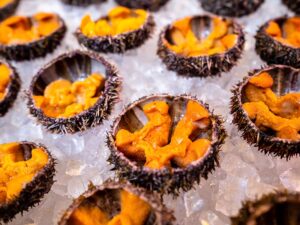
Echinoderms
While not as commonly consumed worldwide, some cultures enjoy echinoderms like sea urchins and sea cucumbers. These are known for their unique textures and flavors.
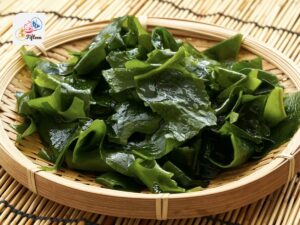
Algae and Sea Vegetables
Although not often classified directly under seafood, algae (including seaweeds) are important in many cuisines around the world. They are highly nutritious, offering a variety of flavors and textures. Examples include nori, kelp, and dulse.
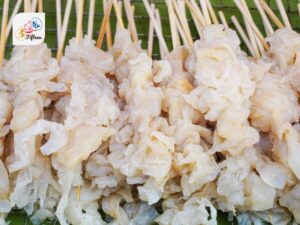
Others
This category can include less commonly eaten marine animals, such as jellyfish or certain types of marine worms, which are considered delicacies in some cultures.
This guide is just the tip of the iceberg when it comes to the vast seafood varieties and fish types. There’s so much more to explore and taste beyond what’s listed here.
What Are the Main Types of Fruits?
Fruits are the edible parts of flowering plants, and they’re sorted into categories based on their plant biology and how they’re used in cooking. Here’s a simpler look at the main fruit types from both angles:
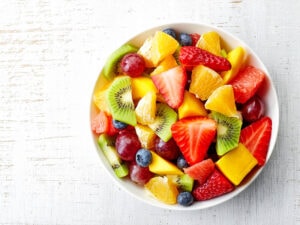
Simple Fruits
These come from the ovary of a single flower. They fall into two groups: ones that stay juicy, like berries (grapes and tomatoes), drupes (peaches and cherries), and pomes (apples and pears), and ones that dry out.
The dry ones either open to release seeds, such as beans, or don’t open at all, like nuts and grains.
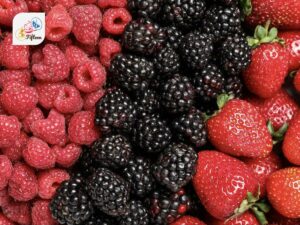
Aggregate Fruits
These are made from many ovaries of one flower. They cling together tightly. Strawberries, blackberries, and raspberries are examples where what seems like seeds on the outside are actually tiny fruits close together.
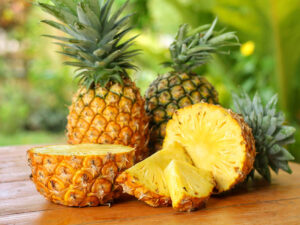
Multiple Fruits
These form from the ovaries of several flowers that are near each other. Their ovaries join to create a larger fruit. Pineapples and figs are classic examples.
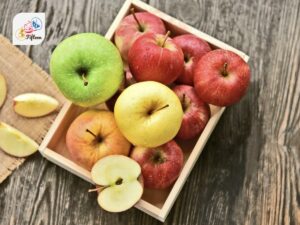
Accessory Fruits
In some cases, parts of the flower besides the ovary make up the fruit. For instance, most apples come from the flower’s base, not its ovary, making them an accessory fruit.

In Cooking
In cooking, fruits are often divided into sweet ones, like apples and oranges, and savory ones, such as tomatoes and avocados. Which fruits are considered sweet or savory can vary by culture and region.
This is just a glimpse into the wide kinds of fruits available. There’s a whole world of flavors and textures out there waiting to be explored.
What Are the Key Types of Vegetables?
Vegetables, crucial components of a balanced diet, are classified based on the parts of the plant they originate from. Here’s an overview of the most common types:
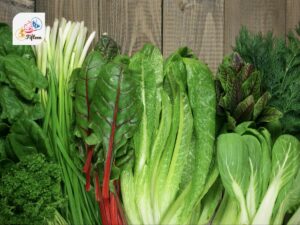
Leafy Greens
These are parts of plants that we consume as leaves. Examples include spinach, kale, and lettuce. They are known for being rich in vitamins and minerals.
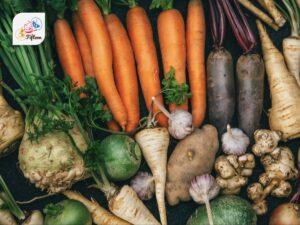
Root Vegetables
Root vegetables grow underground and absorb nutrients from the soil. Carrots, beets, and turnips are well-known root vegetables, valued for their high fiber content and vitamins.
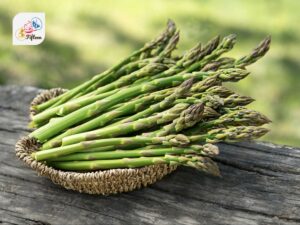
Stem Vegetables
Stem vegetables are the plant stems we eat. Asparagus and celery are popular examples. They are often used in cooking for their texture and flavor.
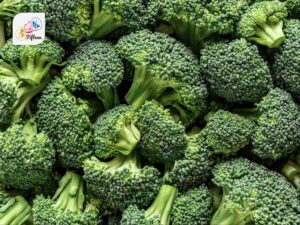
Flower Vegetables
Some vegetables are actually the flowers of the plant. Broccoli and cauliflower are examples of flower vegetables, celebrated for their nutritional benefits, including antioxidants.
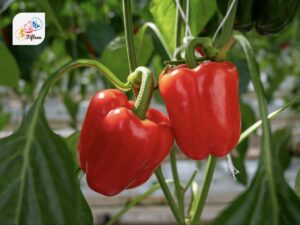
Fruit Vegetables
Technically fruits but commonly used as vegetables in culinary contexts, these include tomatoes, peppers, and eggplants. They are rich in vitamins, especially vitamin C and A.
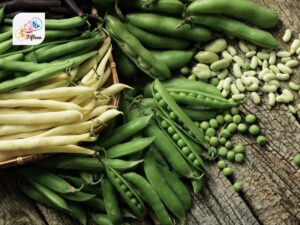
Seed Vegetables
These are the seeds of plants that we consume. Beans, peas, and corn are examples, known for their protein content and versatility in dishes.
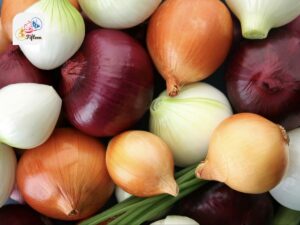
Bulb Vegetables
Bulb vegetables grow just below the ground surface and store nutrients. Onions and garlic are common bulb vegetables, often used to enhance flavor in cooking.
After exploring the quick overview food types, it’s time to explore how different cooking methods, from boiling to grilling, can transform these ingredients into a wide range of dishes and delicious meals.
What Are The Most Common Food Preparation Methods?
Food preparation involves various methods, each contributing uniquely to the final dish’s taste, texture, nutritional value, and visual appeal. The most common methods can be broadly categorized into:
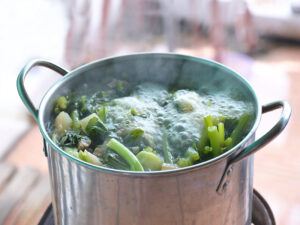
Boiling
A simple technique where food is cooked in boiling water or broth. It’s commonly used for pasta, rice, vegetables, and eggs. Boiling is effective for softening food and is considered a healthy cooking method as it requires no fat.
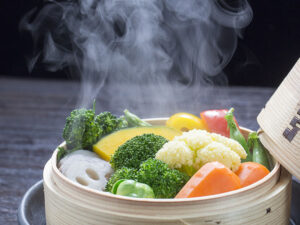
Steaming
Food is placed in a steamer basket over boiling water, allowing it to cook through steam. This method is especially good for vegetables and seafood, preserving their color, texture, and nutrients better than boiling.

Baking
A method where food is cooked through prolonged exposure to heat in an oven. Baking is versatile, used for bread, pastries, fish, meats, and vegetables. It allows for the development of complex flavors and textures, especially in baked goods.
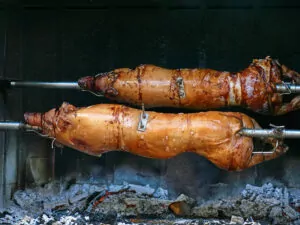
Roasting
Similar to baking, but typically at higher temperatures, roasting is applied to meats and vegetables. It enhances flavor through caramelization and browning on the surface of the food.

Grilling
Food is cooked on a grill over direct heat, often leading to a charred texture and smoky flavor. Grilling is popular for meats, vegetables, and even fruits, providing distinctive grill marks as a visual and flavor feature.

Frying
Involves cooking food in oil or fat over heat. There are several types of frying such as deep frying, pan frying, stir-frying, and sautéing.

Poaching
Cooking by submerging food in a liquid at temperatures just below boiling. It’s a gentle technique, ideal for delicate foods like eggs, fish, and fruit, preserving their texture and form without adding fat.
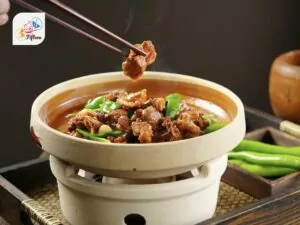
Braising
A combination method involving both dry and moist heat. Food is first seared at a high temperature, then finished in a covered pot at a lower temperature while sitting in some amount of liquid. This method is great for tough cuts of meat, as the long, slow cooking process tenderizes the meat.
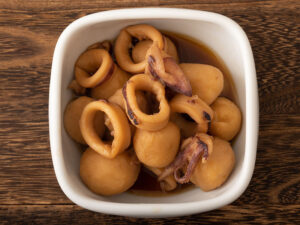
Simmering
Similar to boiling but at lower temperatures. It’s used for soups, stews, and sauces, allowing flavors to meld together without the vigorous agitation of boiling, which can break apart delicate ingredients.
The sentences above highlight only a handful of renowned cooking techniques; explore this guide to discover diverse food preparation methods that contribute to a lot of recipes and various kinds of prepared food worldwide.
Which Types of Prepared Foods Are Most Famous?
Here’s a list of some of the most well-known types of prepared foods across various categories:
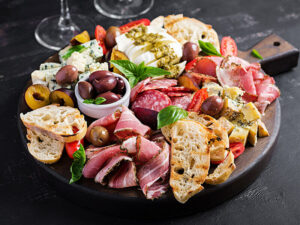
Appetizers
Small servings of food served before the main meal to stimulate appetite.

Confectionery
Sweets or candies, often rich in sugar and carbohydrates, crafted into delightful treats.
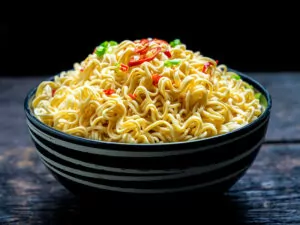
Convenience foods
Pre-packaged or pre-cooked meals designed for easy preparation, saving time and effort.

Desserts
Sweet courses that conclude a meal, varying widely in preparation and ingredients. A wide array of desserts is available.
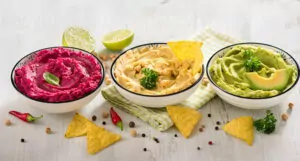
Dips, Pastes, and Spreads
Thick sauces or spreads made from a variety of ingredients, served alongside or on top of other foods.
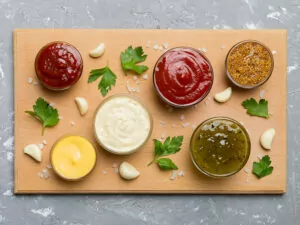
Condiments and Sauces
Liquid, creamy, or semi-solid foods served with other dishes to add moistness and flavor. An extensive range of sauces exists in global cuisine.

Dried Foods
Foods with moisture removed through drying processes, extending shelf life and preserving the food.

Fast Food
Quick-service food items, typically less nutritious, served rapidly in fast-food establishments.
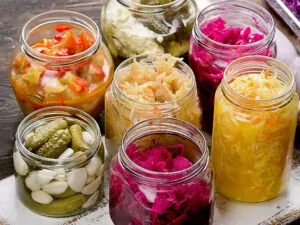
Fermented Foods
Foods transformed through controlled microbial growth and enzymatic conversions, enhancing flavor and preservation.
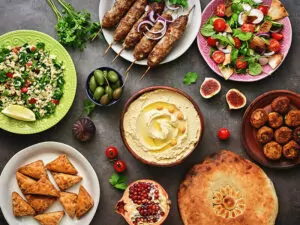
Halal Food
Foods permissible under Islamic law, specifically prepared as per Islamic dietary guidelines.
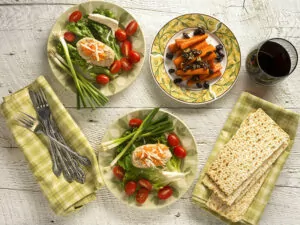
Kosher Food
Foods that comply with Jewish dietary regulations, including specific preparation methods and ingredient selection.
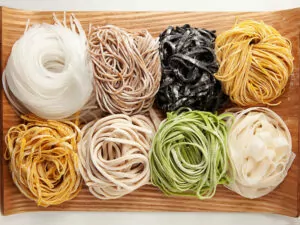
Noodles
Staple foods made from unleavened dough, stretched, extruded, or rolled flat and cut into various shapes.

Pies
Baked dishes of fruit, meat, or vegetables, typically encased in or topped with pastry.
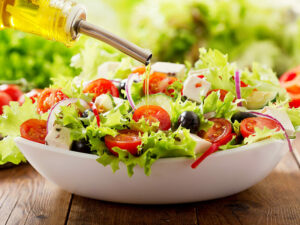
Salads
Dishes consisting of mixed ingredients, often including vegetables, fruits, cheese, and dressings, served chilled or at room temperature.

Sandwiches
Consisting of one or more types of food, such as meat, cheese, or vegetables, placed on or between slices of bread.
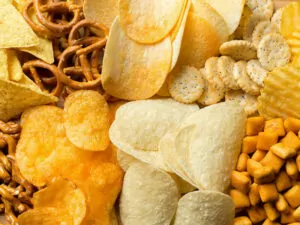
Snack Foods
Light foods or beverages consumed between regular meals, often to satiate temporary hunger. You’ll find a wide variety of snack foods to explore.
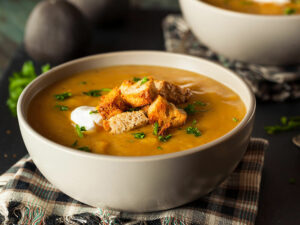
Soups
Liquid dishes, often savory, made by combining ingredients such as meat and vegetables with stock, juice, water, or another liquid.
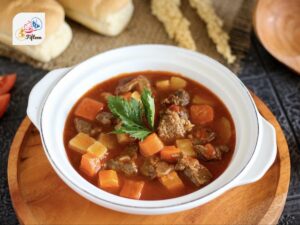
Stews
Hearty dishes cooked slowly in liquid, allowing the flavors of the solid ingredients to meld with those of the liquid.
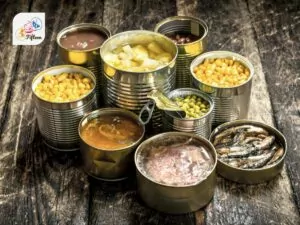
Canned Food
Food items preserved by being sealed in an airtight container for long-term storage. Numerous canned food varieties are on the market worldwide.
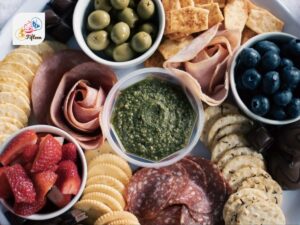
Artisanal Food
Foods crafted in a traditional or non-mechanized way using high-quality ingredients, often in small batches.
Moving on, let’s find out the core taste of these foods.
What Are the Main Tastes of Food?
Taste, a key sensory attribute, enables you to discern different flavors in food, contributing significantly to your eating experience and food choices. The human perception of taste includes five primary tastes, as explained below:

Sweet
Sweet tastes are often linked to sugar and its derivatives, providing a pleasant sensation often associated with energy-rich foods.

Sour
Sour taste comes from acidity, like what you find in lemons or fermented products, signaling the presence of vitamin C or other organic acids.
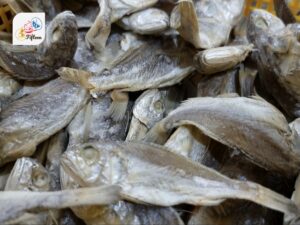
Salty
Salty taste, driven by salt or sodium presence, is crucial for maintaining our body’s fluid balance.

Bitter
Bitter taste, which can be a warning sign of poisons or toxic substances, is found in foods like bitter greens and coffee.

Umami
Umami, recognized as savory, is associated with foods high in amino acids, like meat, cheese, and mushrooms, signaling protein content.
Each taste plays a role in your dietary preferences, nutritional intake, and helps define the unique character of each cuisine.
What Defines Cuisine?
Cuisine is shaped by a region’s food, preparation methods, and culinary traditions, which can be as broad as national cuisine or as specific as regional or local cuisine. Here’s a simple breakdown of what makes up a region’s cuisine:
With so many factors influencing global cuisines, there is an endless variety of flavors, dishes, and traditions for you to explore. Each region offers its unique taste of the world, inviting you to discover the many types of cuisine available.
In the next section, you can know about how cultural perspectives and historical contexts shape our food practices.
How Do Cultural Perspectives Shape Food Practices?
Here is an overview of the factors that shape food cultures around the world:
Depend on the natural environment; availability of local ingredients determines dietary staples.
Examples: Coastal regions often have diets rich in seafood (e.g., Japanese sushi), while inland areas focus on agricultural products (e.g., Midwest American corn).
Dietary laws and customs rooted in religious doctrines. Some food is also linked with religious or symbolic meaning.
Examples: Islam prohibits pork and alcohol, Hinduism encourages a vegetarian diet, Judaism has kosher dietary laws.
Food as a means of social bonding and expression of cultural values during communal meals.
Examples: In Mediterranean cultures, meals are often lengthy and shared among family and friends, emphasizing community.
Traditional cuisines as symbols of heritage and identity, passed down through generations.
Examples: Italian pasta dishes, Indian curries, and Mexican tacos each reflect their country’s history and cultural influences.
Blending of culinary traditions due to global interactions, leading to diverse diets but also cultural homogenization.
Examples: The popularity of sushi in the United States or the global spread of American fast-food chains like McDonald’s.
As these traditions evolve, they often lead to innovative food pairings, where the fusion of different culinary practices offers a fresh taste experience that bridges cultures on a plate.
What Are the Characteristics of Food Pairing?
Let’s dive into how picking the right foods to go together or the perfect food and beverage collection combo can make our meals taste better and why it matters.
Let’s explore how food and beverages pair up to elevate your meal experience, focusing on key principles for that perfect match in the next section.
How Food and Beverages Complement Each Other?
Food and beverages are closely linked in cuisine, complementing and enhancing each other’s taste and enjoyment. Here’s a simple breakdown of how various drinks beautifully go hand in hand with food:
Continue reading as I am going to explain the differences between staple and specialty foods.
Staple Foods vs. Specialty Foods: How Do They Differ?
Below is a concise overview of the differences between staple foods and specialty foods:
Staple Food
Specialty Food
Moving from the broader categories of food types, the distinction between food and dish becomes a fascinating exploration of culinary structure and creativity.
Food vs. Dishes: What Are the Differences?
The terms “food” and “dishes” are often used in everyday language with considerable overlap, but they refer to different aspects of eating and culinary culture. Here are the key distinctions:
Food
Dishes
When we talk about “food” and “dishes,” adding a bit about food and dish overview really helps you know how special your relationship with eating is.
Next, let’s discover the list of foods by alphabetical order.
List of Foods by Alphabetical Order
Dive into the organized collection of foods, listed from A to Z, to find your favorite foods or discover new ones:
Next, categorizing foods by color will offer a vibrant perspective on how colors play a crucial role in our dietary preferences and perceptions of food.
List of Foods by Colors
Explore the array of foods sorted by their colors, making it fun and easy to pick meals that taste great and look beautiful.
If you enjoyed reading about the wonderful world of foods, why not share your joy with others? Hit the like button, drop us a comment with your own food stories or tips, and share this article with friends and family who appreciate a good meal as much as you do. Thank you for reading!

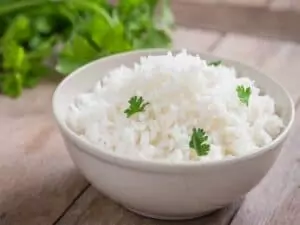
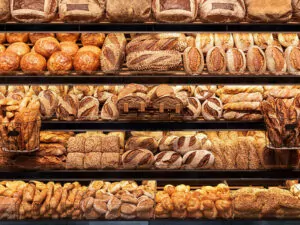

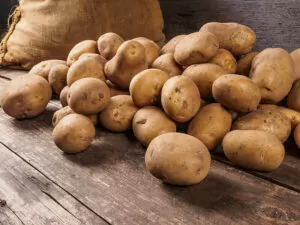
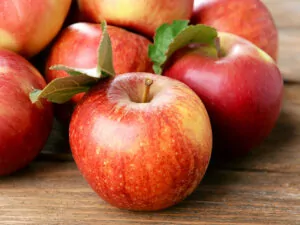
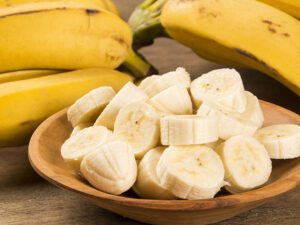
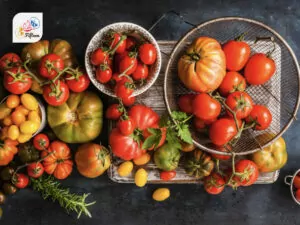
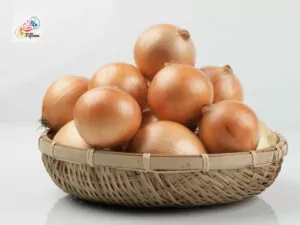
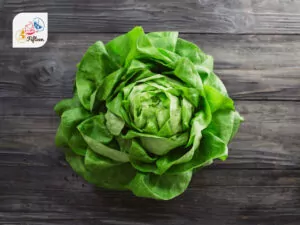
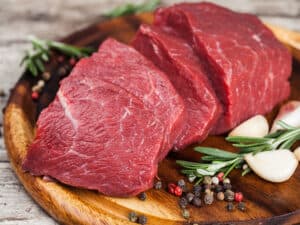
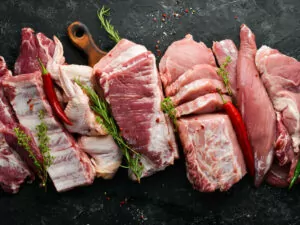
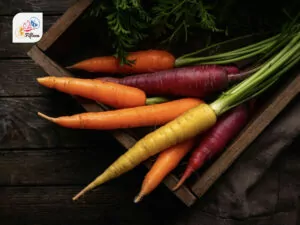
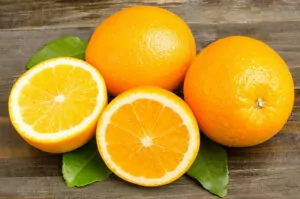

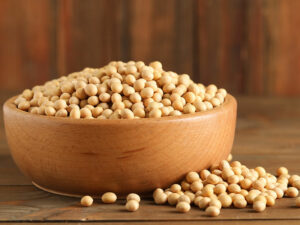
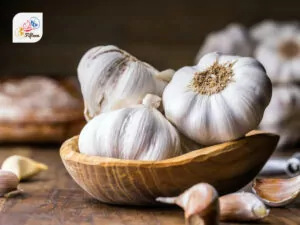

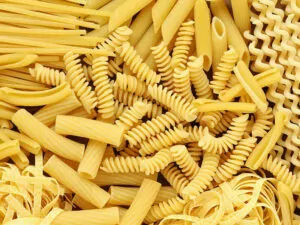
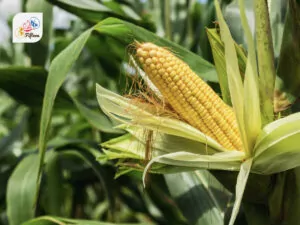
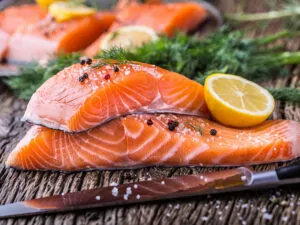
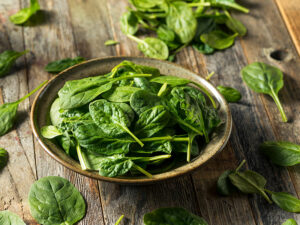

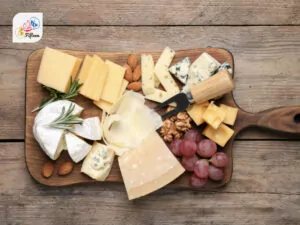
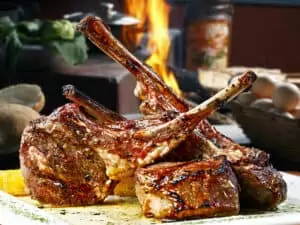
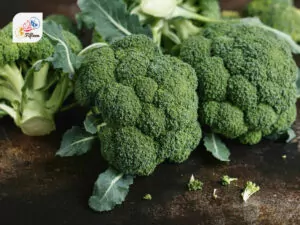
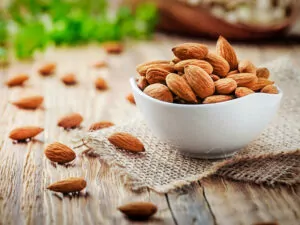
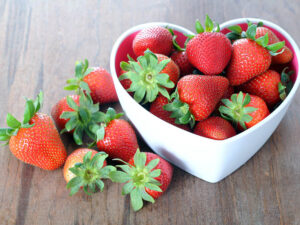
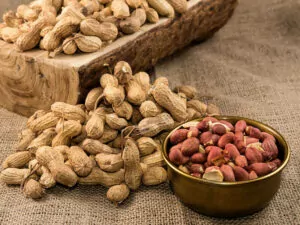
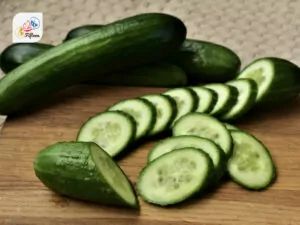
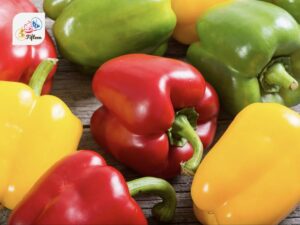

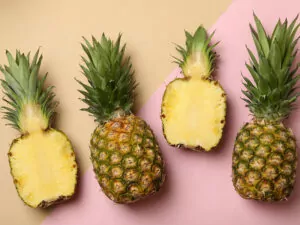
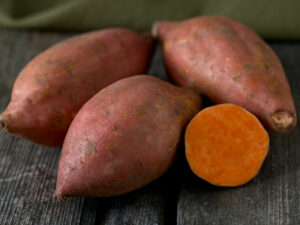
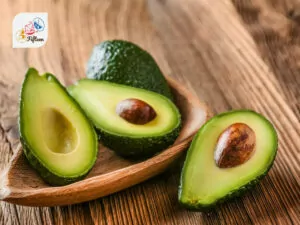
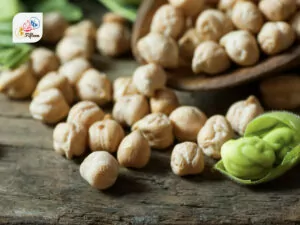
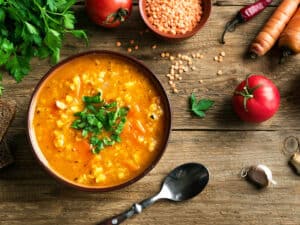
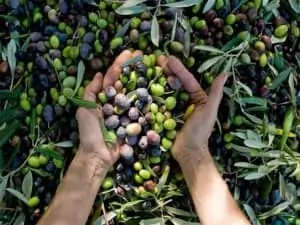

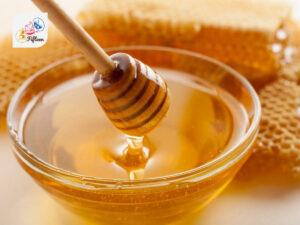

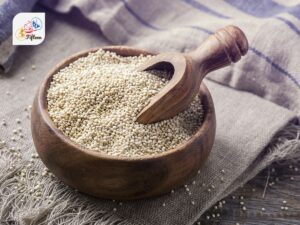
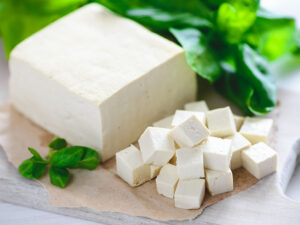
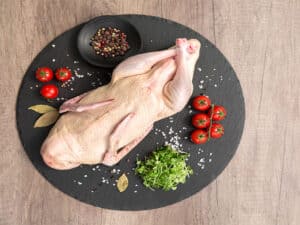

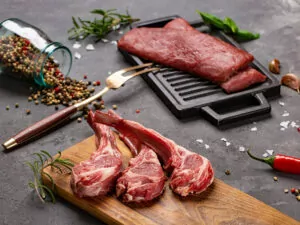
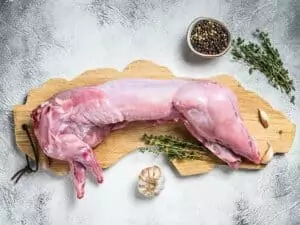
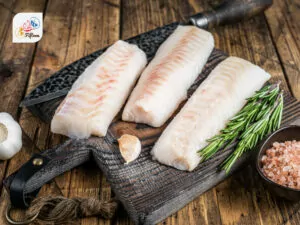
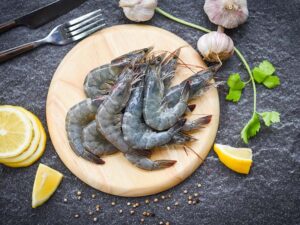
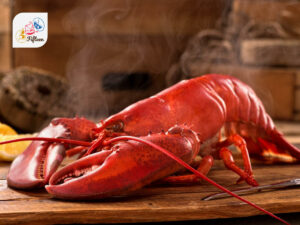
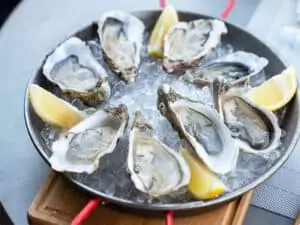

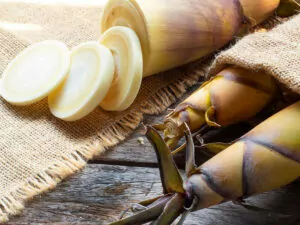

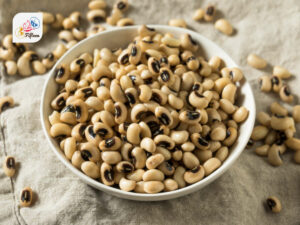
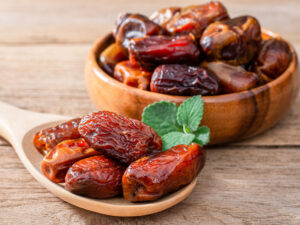

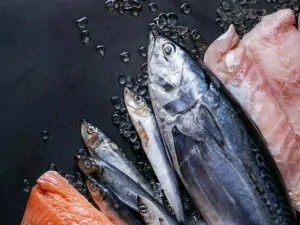

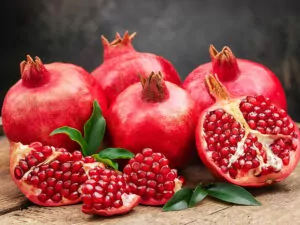
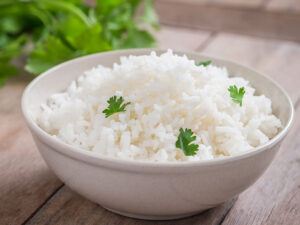
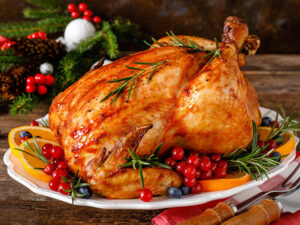

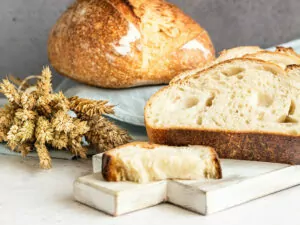
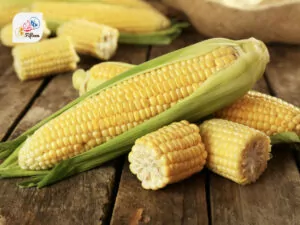
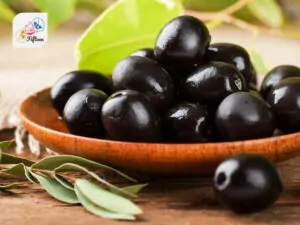

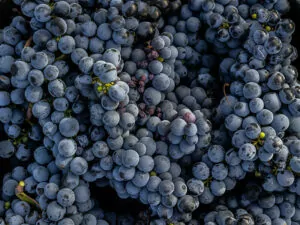
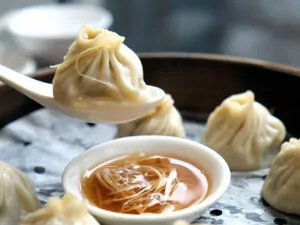
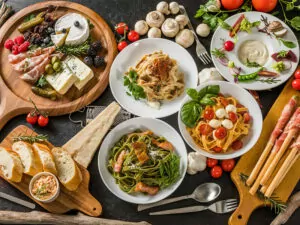
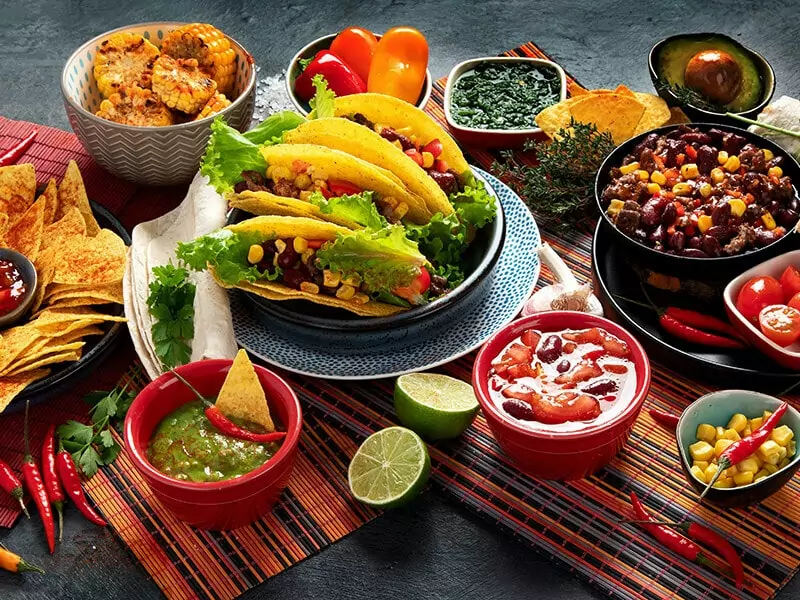
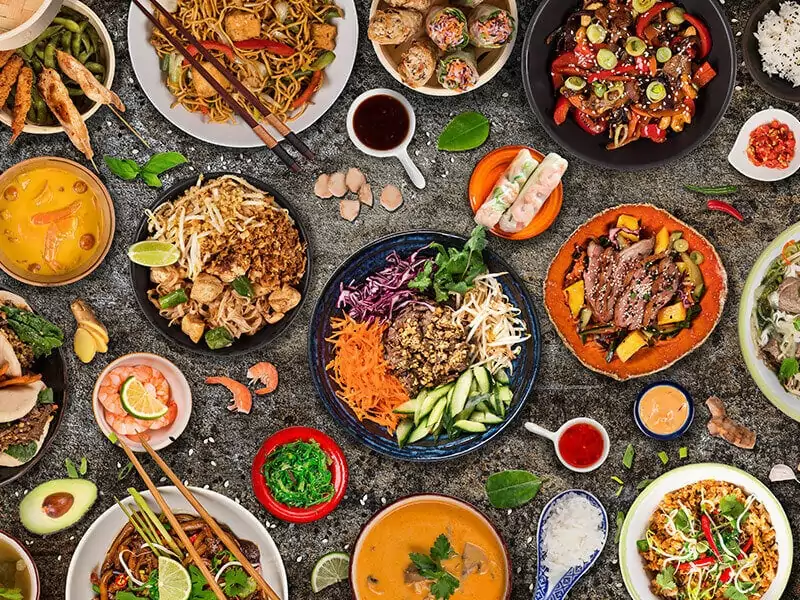
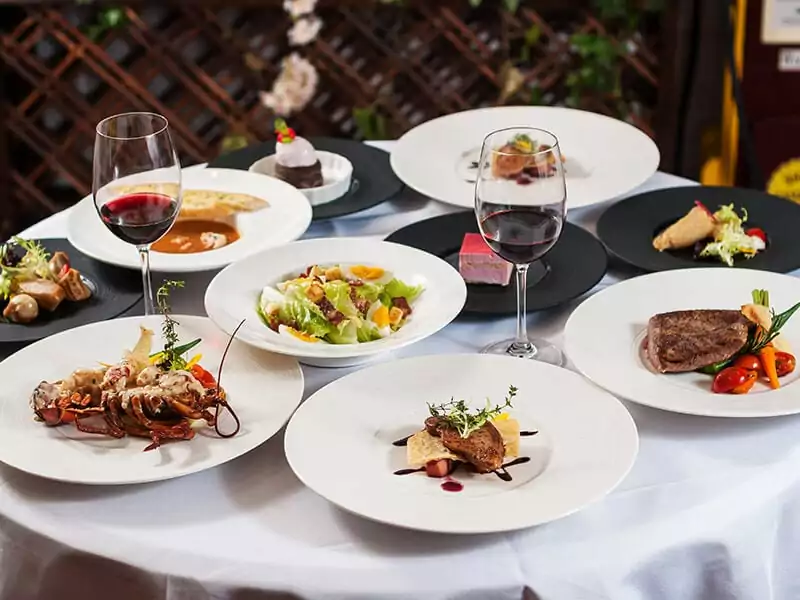
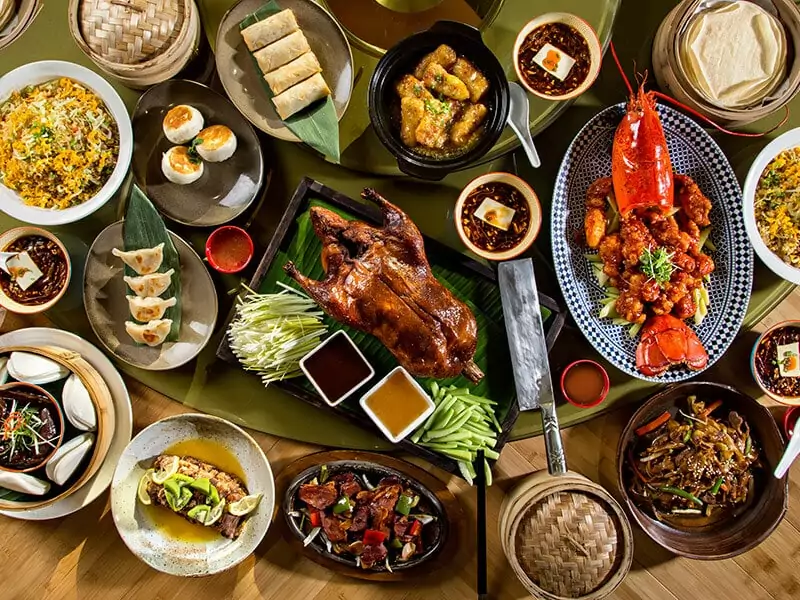
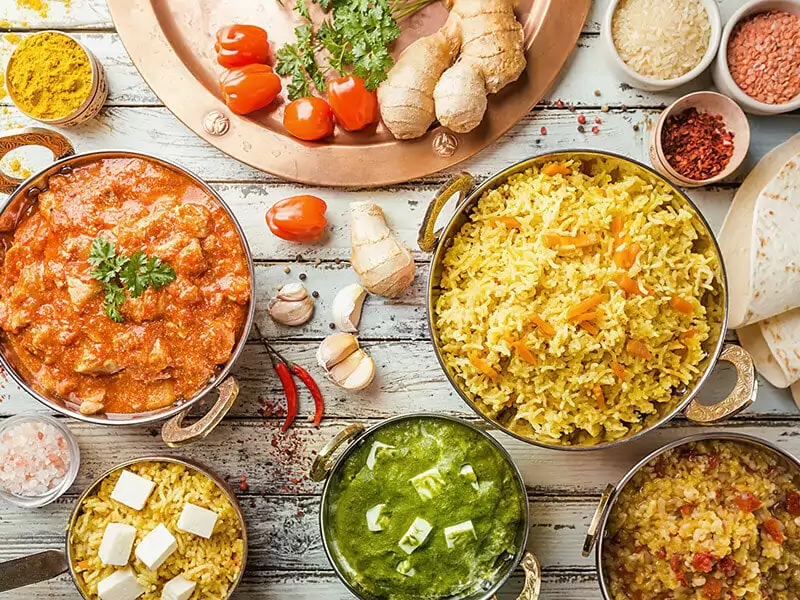
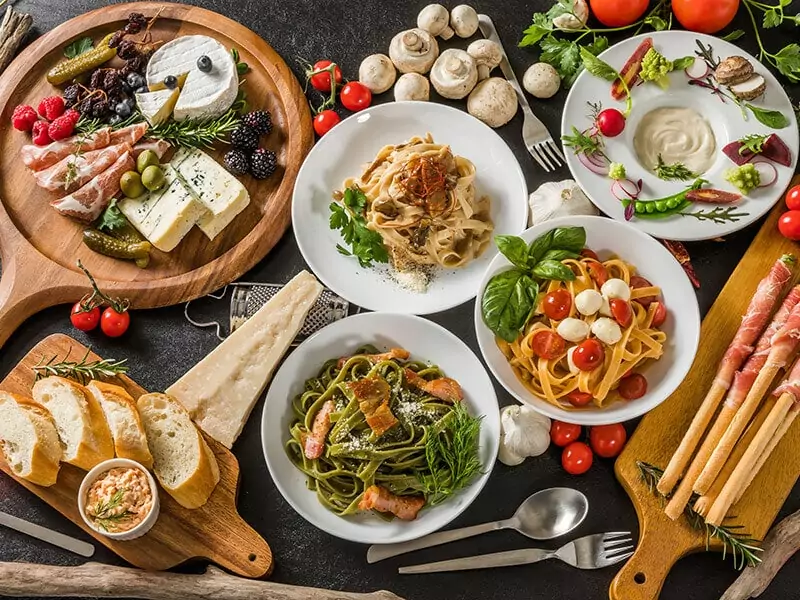


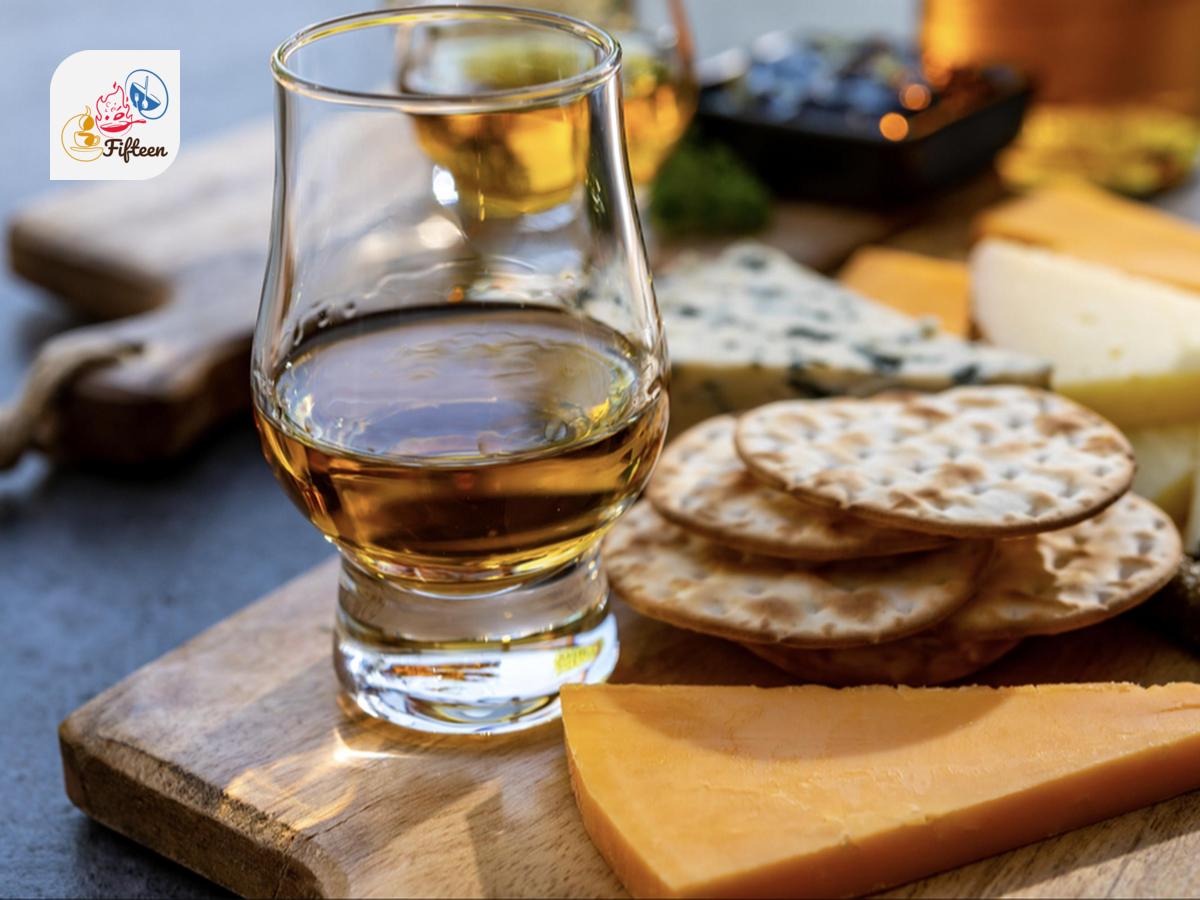
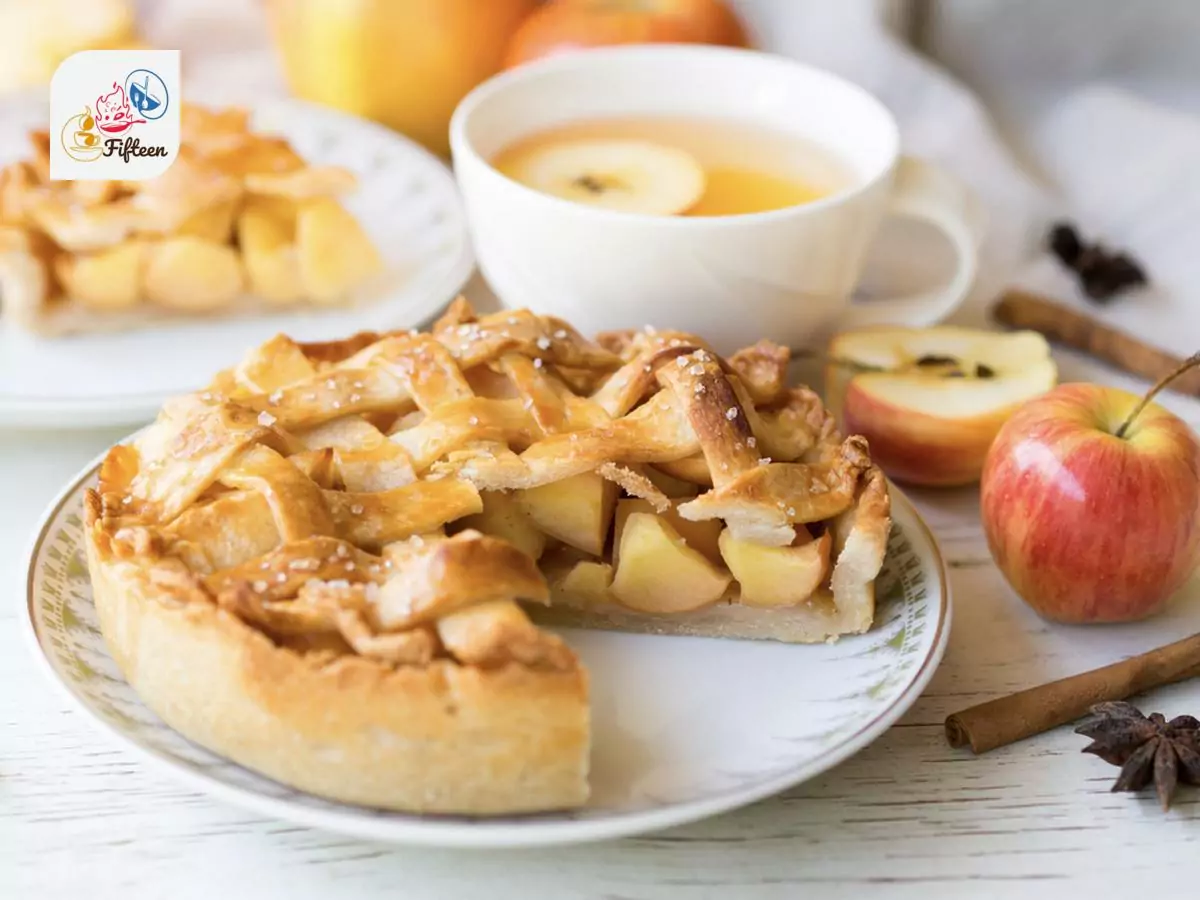


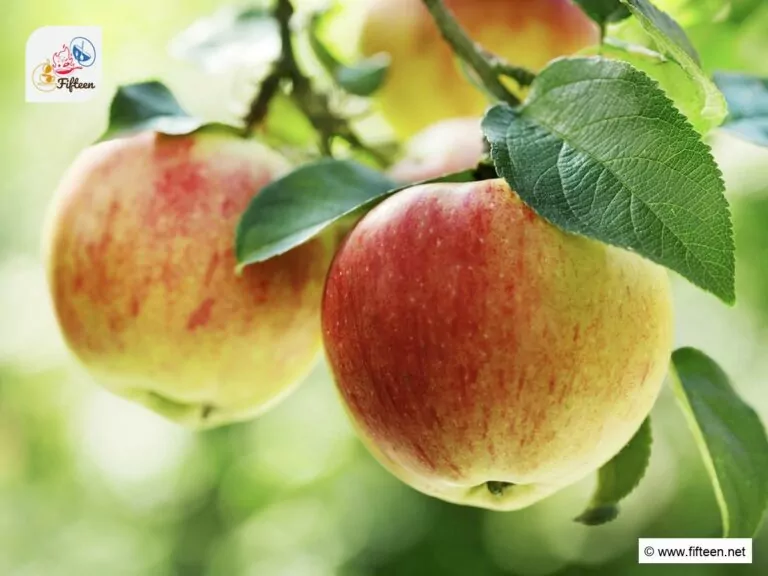
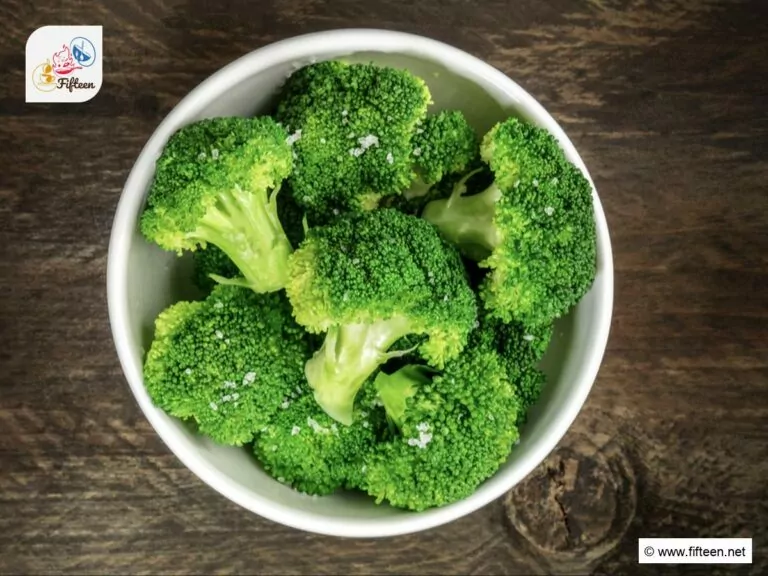
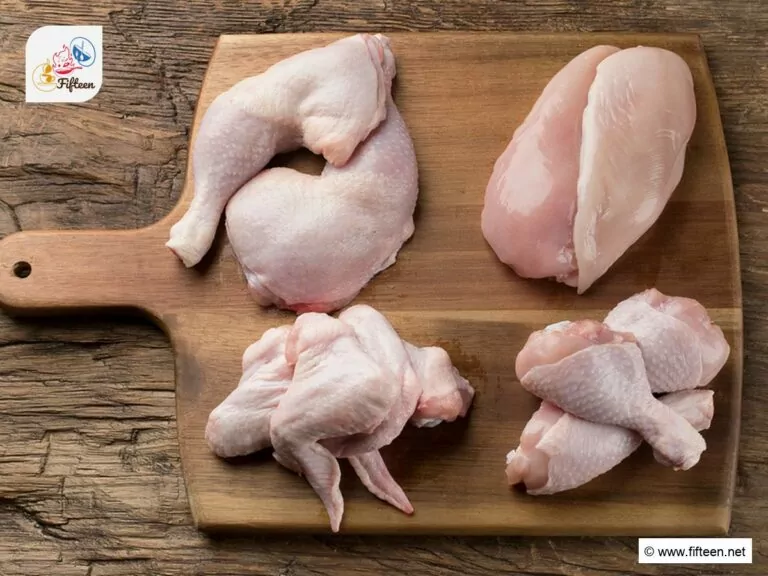
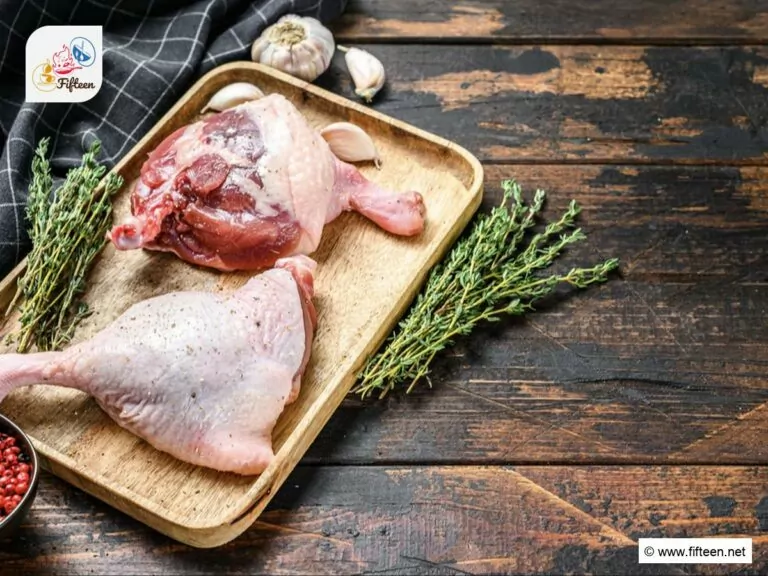
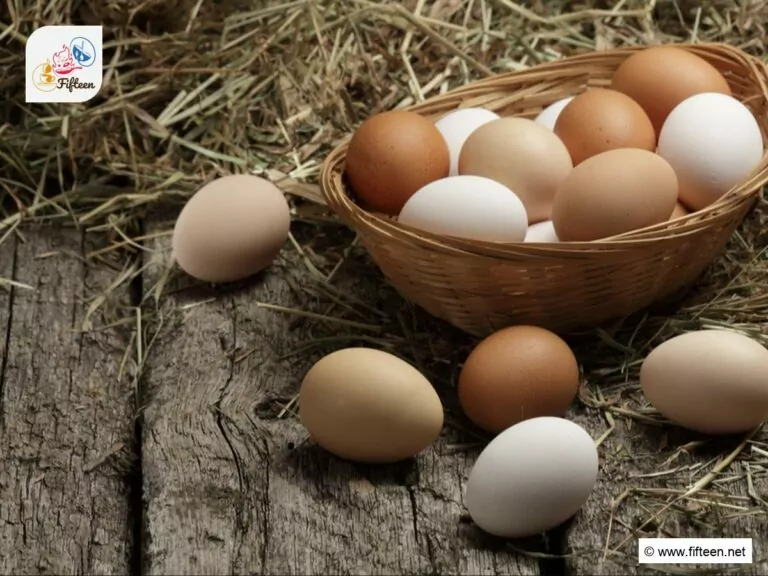
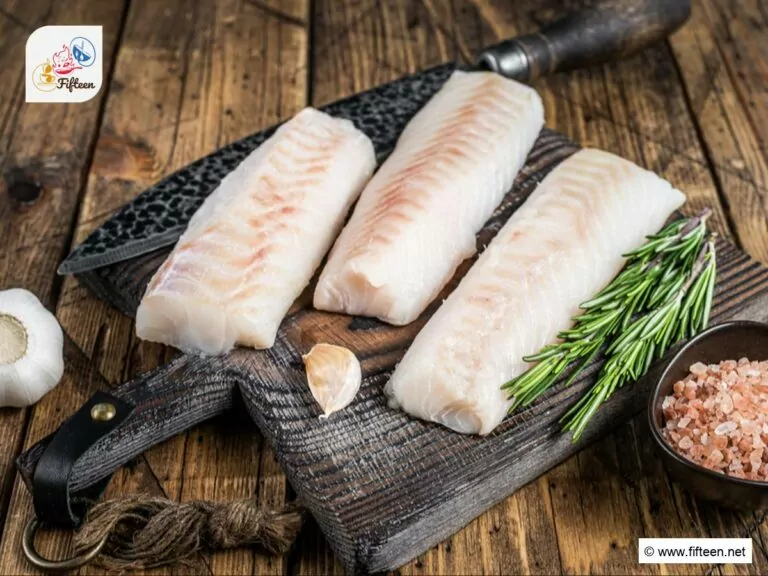
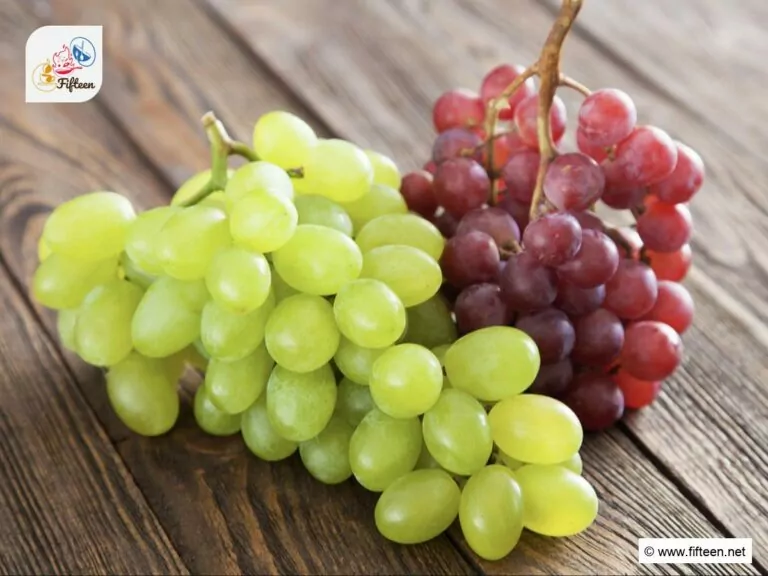
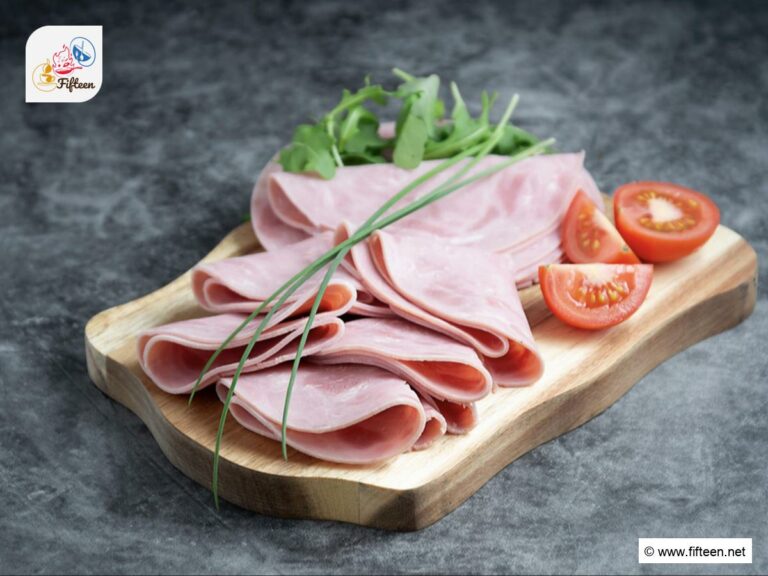
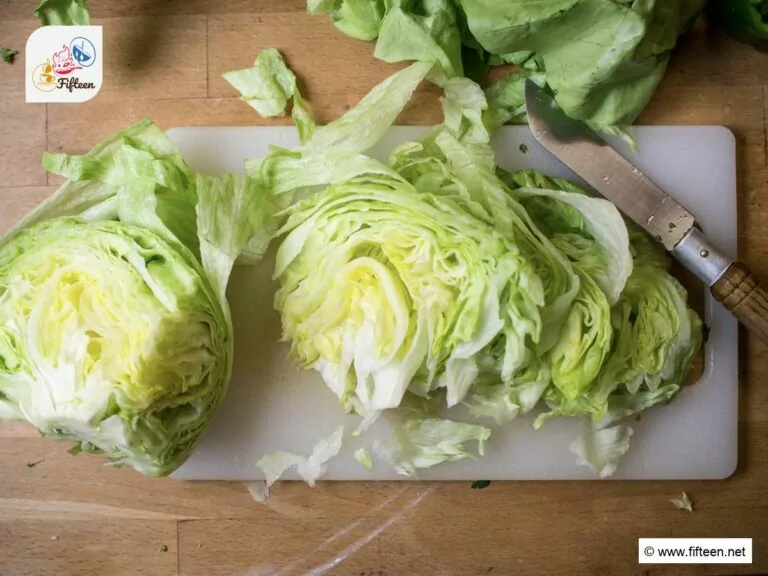
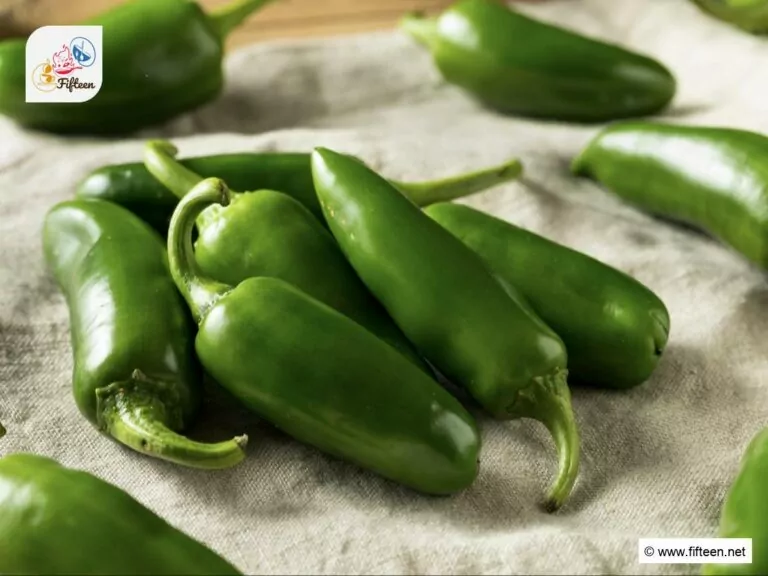
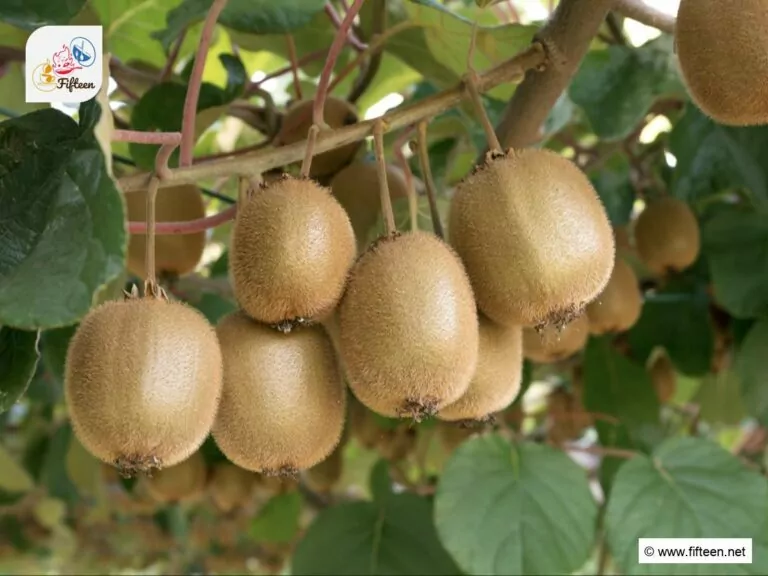
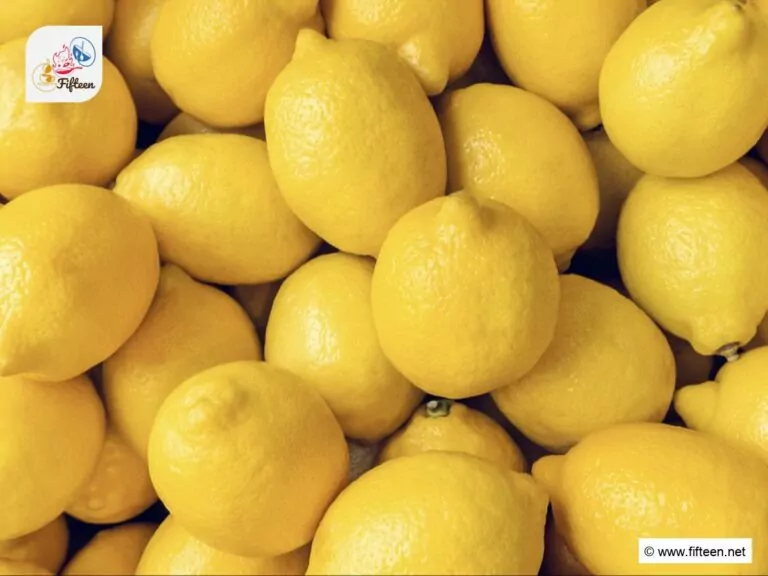

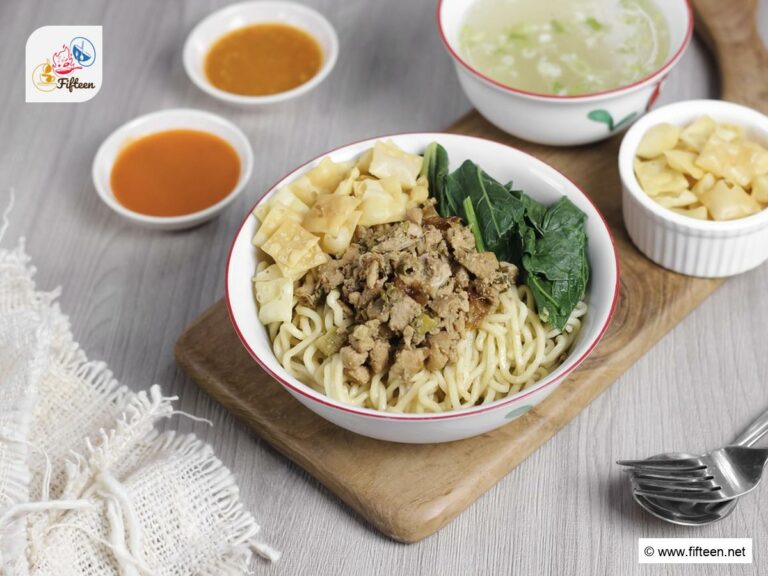
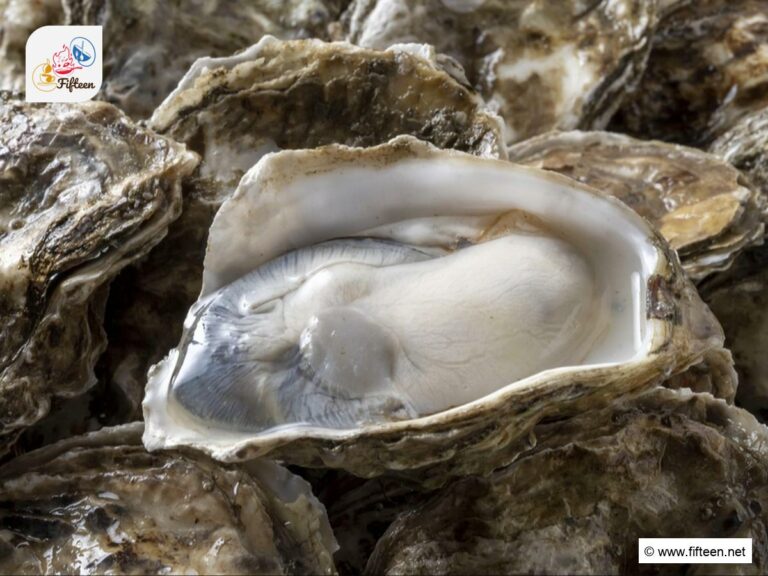
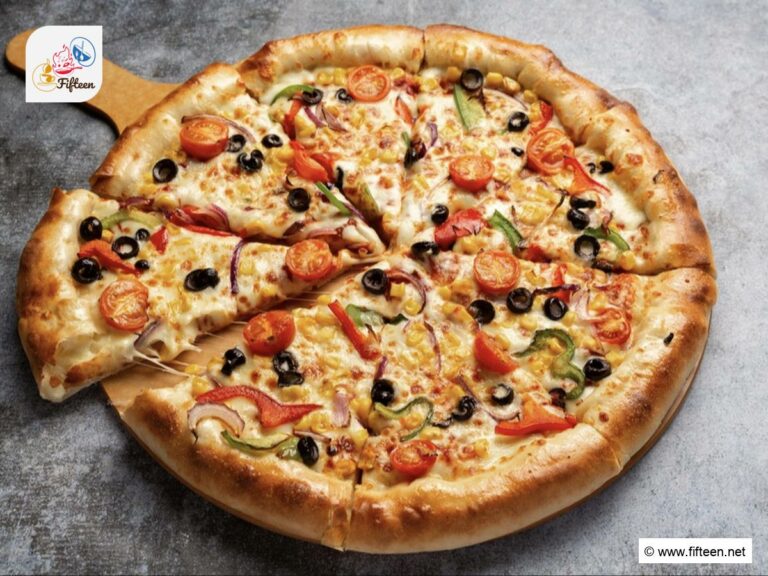
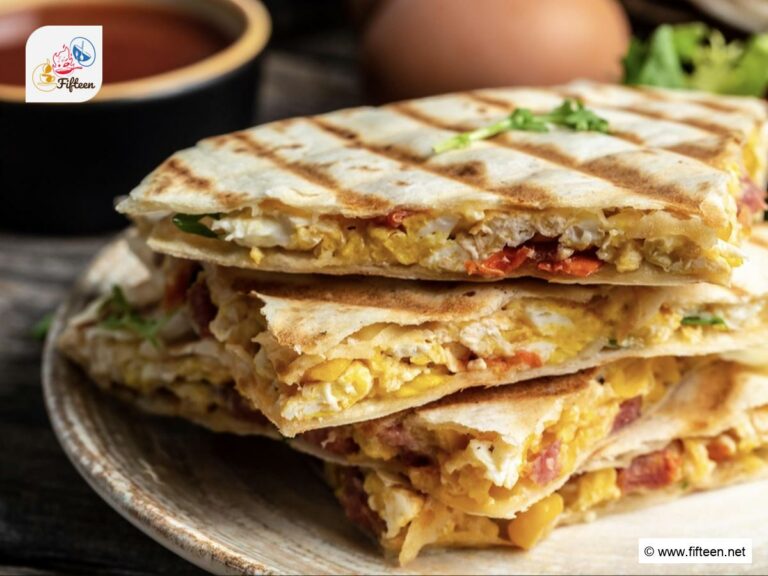
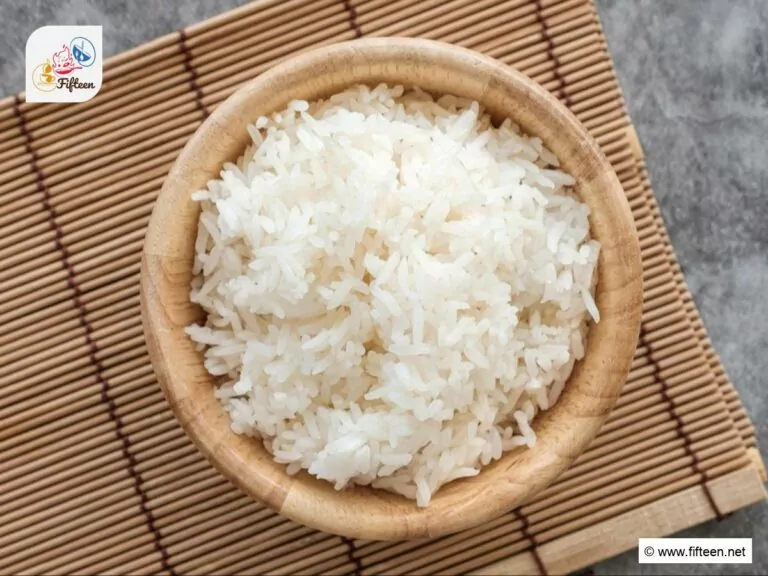
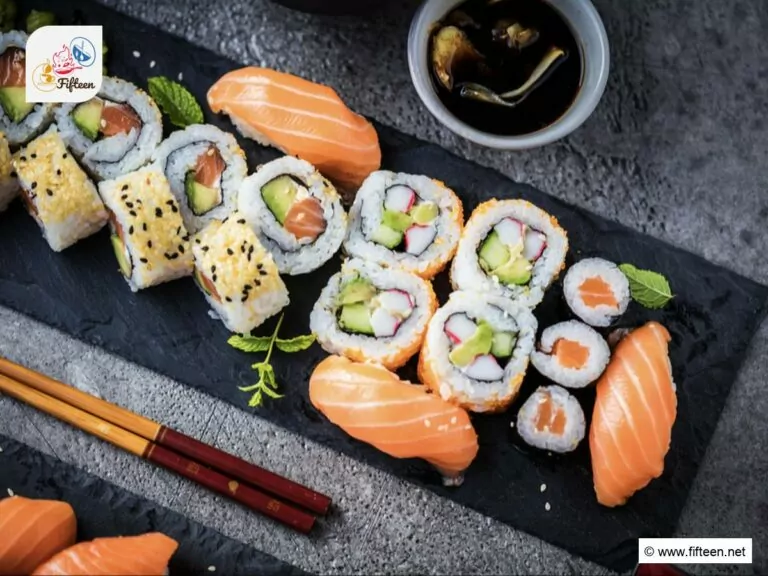
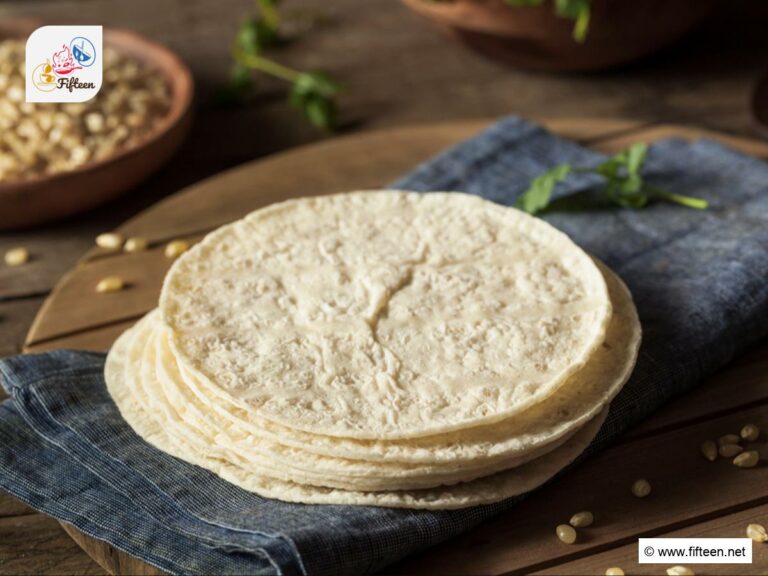
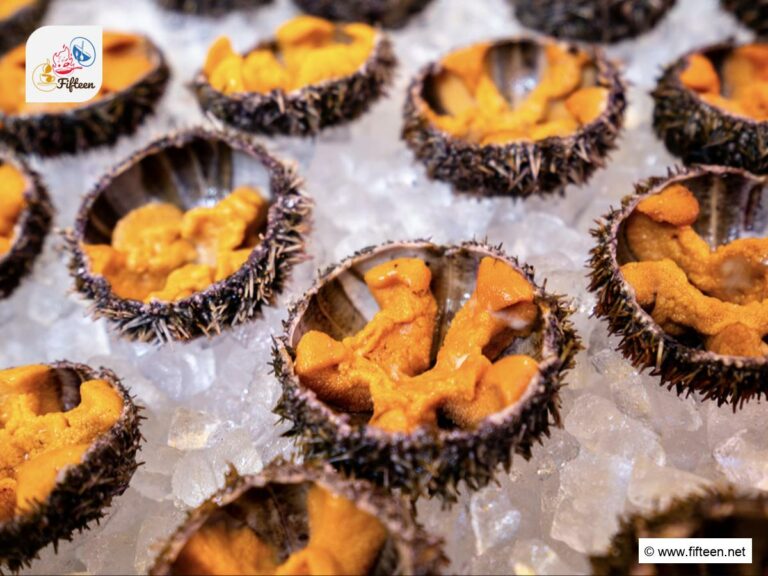
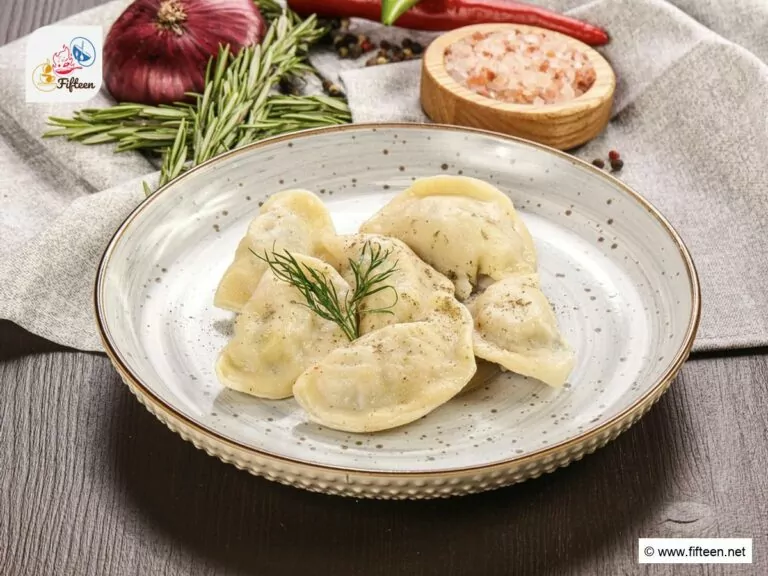

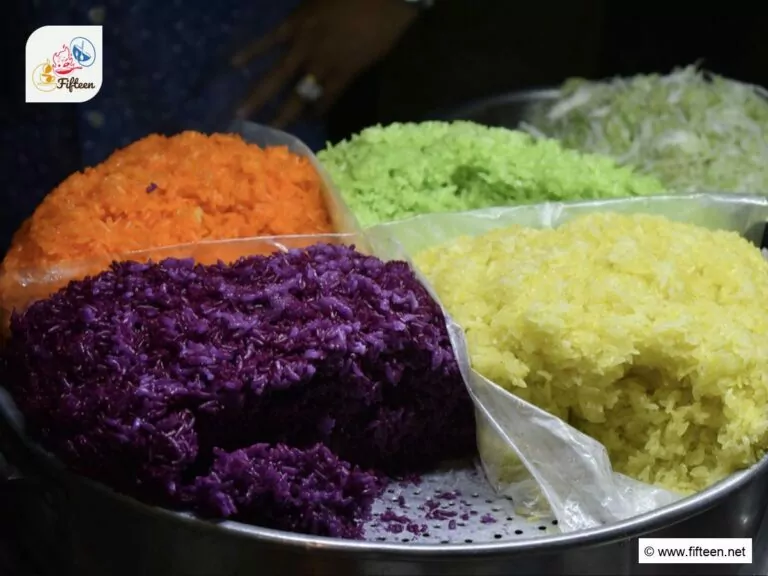


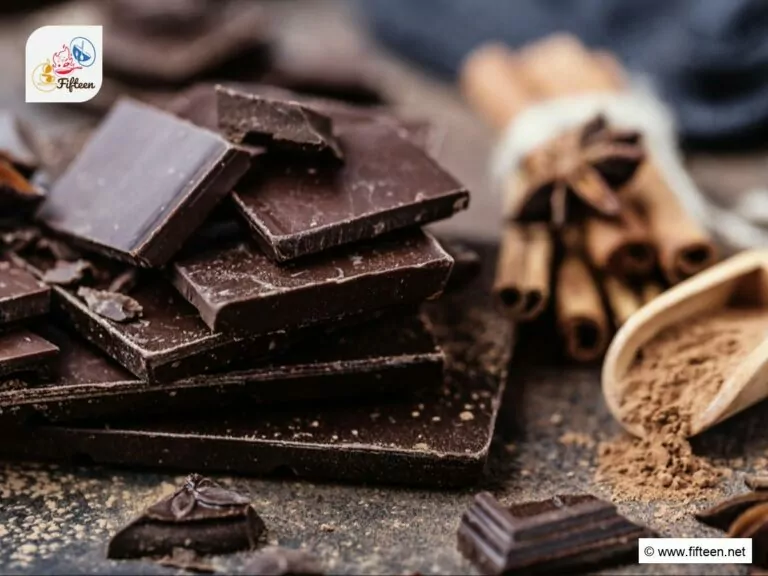
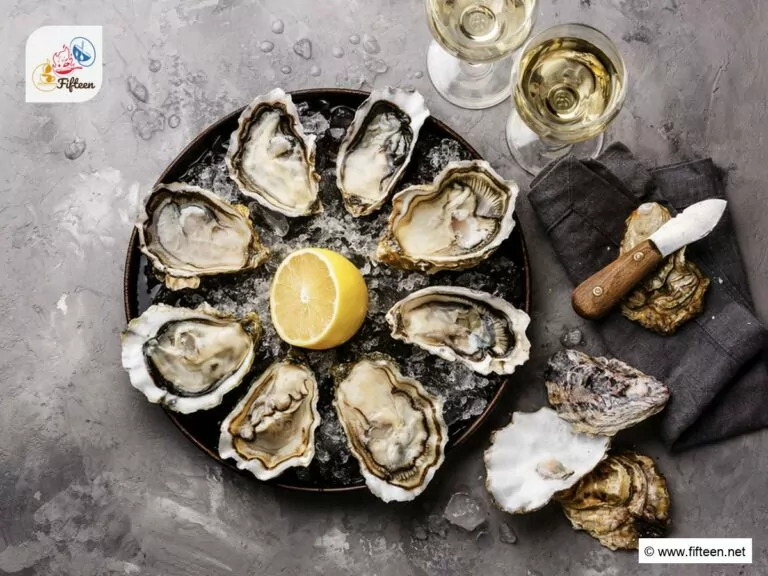
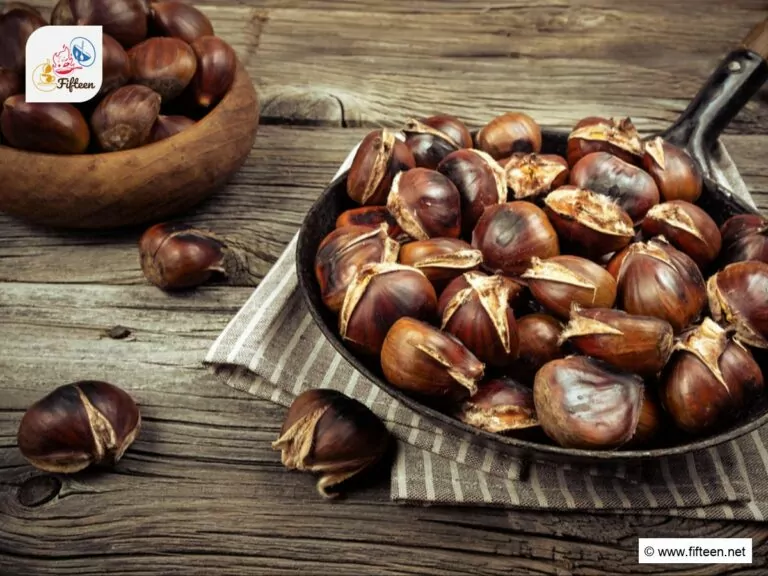
Jamie Scott
Editor in Chief, Senior Content Writer
Expertise
Home Cooking, Meal Planning, Recipe Development, Baking and Pastry, Food Editor, Cooking-video Maker, Western Food Evaluation Expert
Education
Le Cordon Bleu College of Culinary Arts
Local Community College, New York, NY
Jamie Scott is a skilled culinary expert and content creator specializing in Western cuisine. With over 15 years in the culinary field and formal training from Le Cordon Bleu, Paris, Jamie deeply understands how to blend nutrition with delicious flavors. His passion for cooking matches his commitment to making healthy eating accessible and enjoyable.
On Fifteen.net, Jamie brings a fresh perspective to classic dishes and beverages, offering readers insightful recipes, cooking tips, and a fresh view on meal planning that emphasizes taste, health, and simplicity.